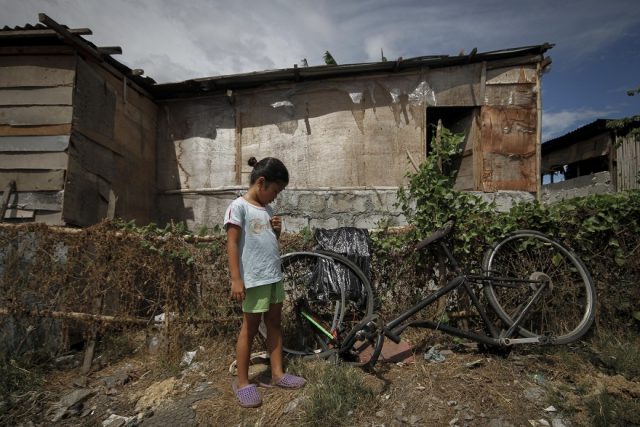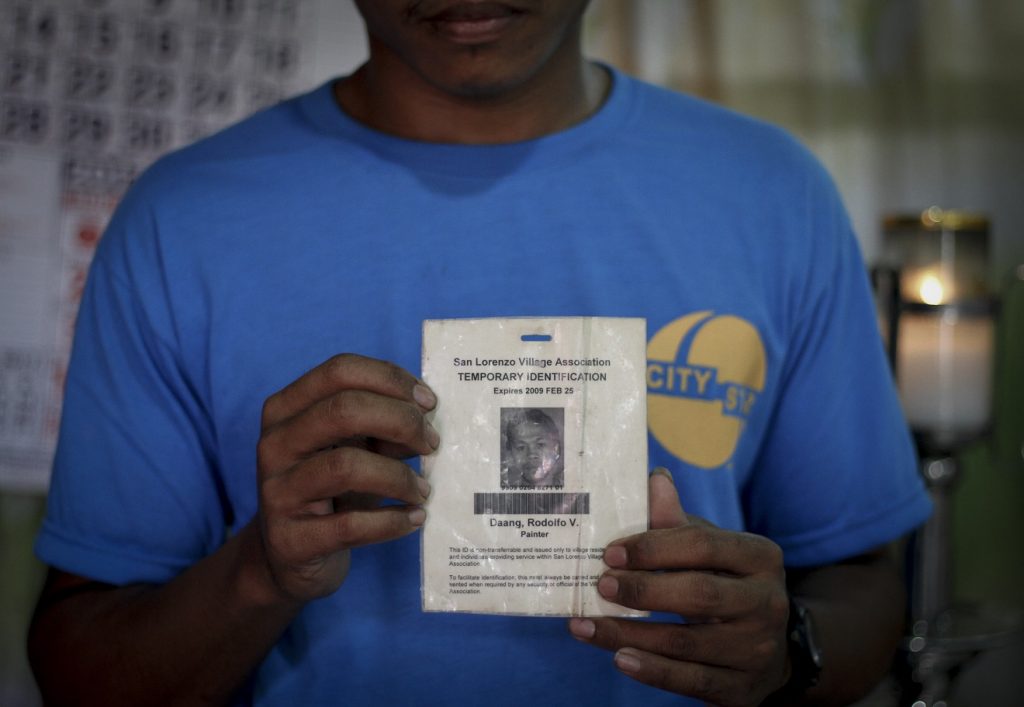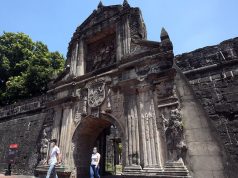
This story was produced under the Bloomberg Initiative Global Road Safety Media Fellowship implemented by the World Health Organization, Department of Transportation and VERA Files.
Sundays were always special days for the Daangs, a working class family in Cavite.
This Sunday should have been the same.
The day before was payday for contractual painter Rodolfo Daang. His sister Rodilyn knew what that meant: he would be bringing home some groceries, pay the bills and pay the rent. She would be able to whip up a special meal for the family while the children, especially Melody, Rodolfo’s favorite niece, could look forward to ice cream and doughnuts from their uncle, the treat he often gave them for doing well in school.

But, it wouldn’t be — and never would again.
Around 1 a.m. on April 30 this year, as he biked home from work on the Noveleta Highway, a car overtook another and ran smack into Daang. He died three kilometers from home. He was 37.
Daang is one of a growing number of fatalities from road crashes, which claimed 446 lives in Metro Manila last year, according to a report by the Metro Manila Accident Recording and Analysis System.
But, according to the World Health Organization, bicyclists, motorcycle riders and pedestrians face the most risk from road mishaps.
“Almost half of all deaths on world’s roads are among those with the least protection — motorcyclists, cyclists and pedestrians,” WHO’s Global Status Report on Road Safety 2015, said.
That year alone, the Metro Manila Development Authority reported that 26 bike riders died in road crashes and at least 926 other persons were also involved in bike-related crashes.
Cyclists and pedestrians are more vulnerable because they lack the protective shells of most four-wheeled vehicles like cars and trucks. They thus suffer disproportionately from collisions, according to the Netherlands-based SWOV Institute for Road Safety Research.
While data on the number of bike users in the country are difficult to obtain as the government does not require that non-motorized vehicles be registered with the Land Transportation Office, many low-income earners are known to use bicycles for short-distance travel to save money on fares.
Daang was one of them.

A native of Tacloban, Daang survived typhoon Yolanda (Haiyan). With hard work and the aid of foreign and local organizations, he was able to rebuild his small house and farm and returned to tilling the land and tending to animals.
But when his brother-in-law had a mild stroke, he decided to move to Cavite to help his sister raise their three children and found work as a contractual hire at a construction firm.
His brother-in-law cobbled together scrap metal and spare parts to make a bicycle Daang would ride to Tagaytay, where he worked on a construction project on weekdays. Often, he would even lend his bike to other workers who needed it.
In Barangay Salcedo Dos in Noveleta, where Daang lived with his sister’s family, most of the breadwinners are minimum wage factory or construction workers.
“There are at least 20 workers in the village who use their bikes to work like me because we make savings that can be used to buy food,” Daang’s neighbor, Larry Ostos Vidal, said.
Vidal, a contractual heavy equipment operator and driver at the municipal government of Kawit, also rides a bike to work, averaging eight kilometers each day.
“If I take public transport, I will pay P60 every day, that’s why I ride my bike to work. I will save money,” he said.\

Earning the daily minimum wage of P350, saving on fares is a priority for Vidal, who has seven children, four of whom are still in school. Even a motorcycle would be too expensive for him because of the cost of maintenance and fuel.
In contrast, biking means he saves 17 percent of his income for the day.
A study released in 2014 by the Japan International Cooperation Agency estimates that a typical Filipino family spends 20 percent of its income on transportation. The study predicts that by 2030, transportation costs will be 2.5 times higher, an additional burden to a commuting public already saddled by safety concerns and daily hours-long gridlocks on the streets of Metro Manila.
The daily minimum wage in the National Capital Region is pegged at P491, according to a 2016 yearend study published by think tank IBON Foundation. However, the real value of this wage has eroded by 2.7 percent due to inflation in 2015 and 2016, the study said.
The death of a family member from a road crash means more financial hardships to a household, particularly those from the low-income sections of society. “In low and middle income countries, [road crashes] particularly affect the economically active age group, or those set to contribute to family, society and the workforce in general,” according to WHO.
Deaths and injuries from road crashes can also burden the national economy, and the health and legal systems. It is estimated that road traffic deaths and injuries can cost low and middle-income countries as much as 5 percent of GDP, WHO said.
But despite the need to ensure the safety of those who regularly use their bikes, the current road infrastructure in the country does not support cyclists.
In Metro Manila, only a handful of cities have segregated bike lanes.
Marikina City opened 100 kilometers of bike lanes in 2000. In a Metro Manila Urban Transportation Integration Study report published in 2014, it is said that around 10,500 daily trips are made in Marikina City by bicycle. This accounts for 6.5 percent of bicycle trips in Metro Manila in 1996.
The Marikina Bikeways System was implemented to encourage citizens to use a more environmentally friendly mode of transportation and benefit those from lower-income segments.
Yet, although Marikina City is hailed as a model for integrating bikeways into existing roads, road crashes involving bike riders remain commonplace.
The government does have a plan for bikers. The Philippine Road Safety Action Plan, a comprehensive, multi-agency transportation plan led by the Department of Transportation, wants to integrate road safety facilities for vulnerable road users and persons with disabilities in the design of existing and new roads.
C6, a 34-kilometer toll road from Taguig to the Batasan Complex in Quezon City, will incorporate a bike way, MMDA assistant general manager Julia Nebrija said.
In the meantime however, cyclists who share the road with motorized vehicles must contend with the daily risk of potentially deadly mishaps, especially with the increasing competition for space.
For Daang’s family, his death meant the loss of income for the whole household, since Rodilyn’s husband, the other breadwinner, has yet to find a steady job as he is still recovering from his stroke.

“My brother had big dreams for my children. He said he wanted his nephews and nieces to finish school so that they can find better jobs. I don’t know how we will do that now,” Rodilyn said.
They have not been able to find the owner of the car that killed Daang. And Rodilyn said police officers assigned to her brother’s case have not been responding to their text inquiries.
Daang’s family had to scrape together P10,000 to pay for his funeral expenses.
Rodilyn said she had to ask her relatives in the province to sell Rodolfo’s pig, which he had bought using the financial aid he received from NGOs as a Yolanda survivor. Her neighbors also pitched in what they could to help the family cover the burial costs.
Daang was finally laid to rest on May 14, nearly two weeks after his death.

Despite the unresponsive local police, Rodilyn remains hopeful justice will be served, that a witness will come forward to identify her brother’s killer.
Knowing her brother as a deeply compassionate and forgiving man, she said it is likely he would only ask for an apology for the gravest fault committed against him.
“[The driver] can at least apologize to us. If we will not find him, how many more will be killed? Just because we are poor and cannot afford to press charges doesn’t mean we do not deserve justice,” Rodilyn said.









